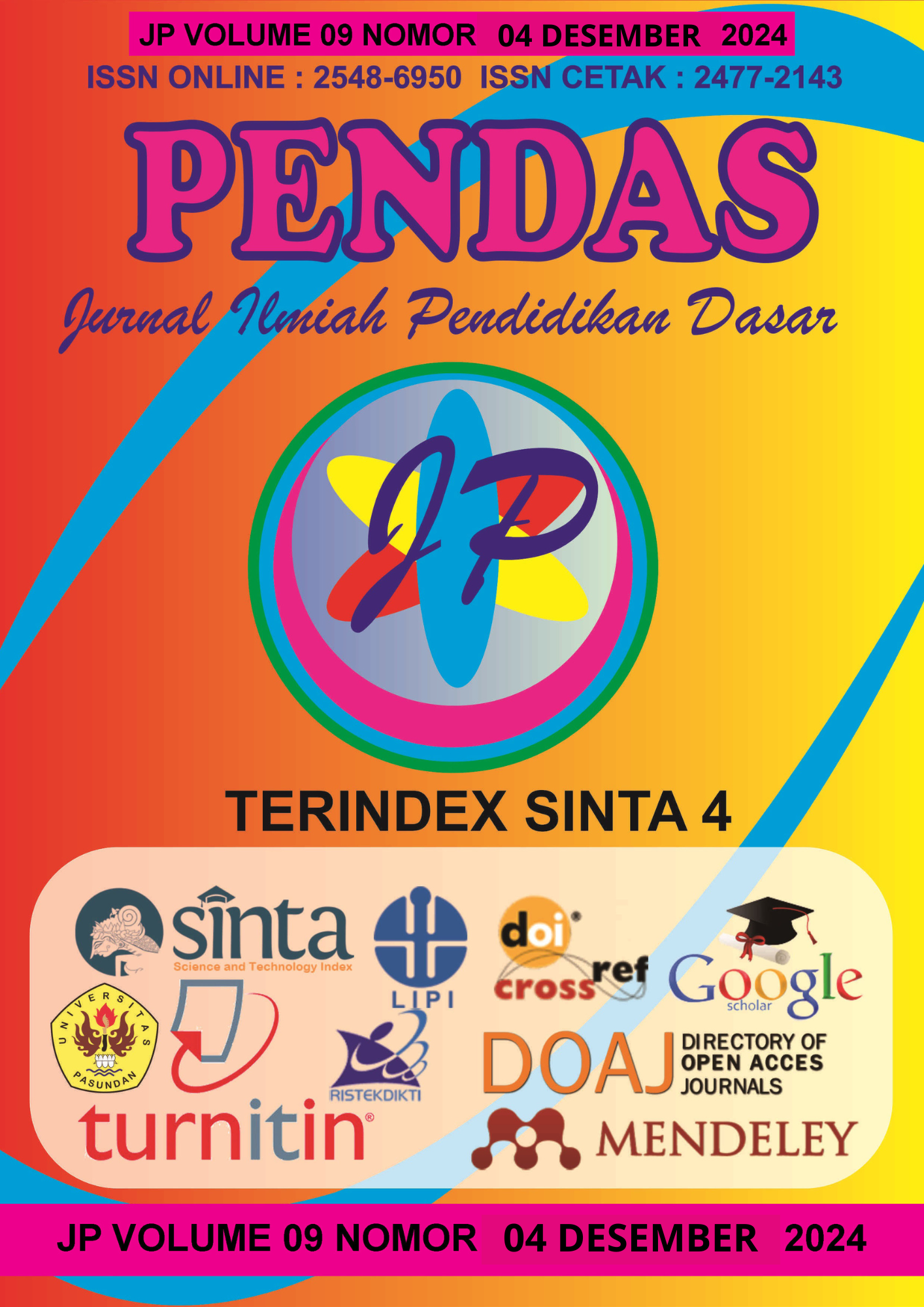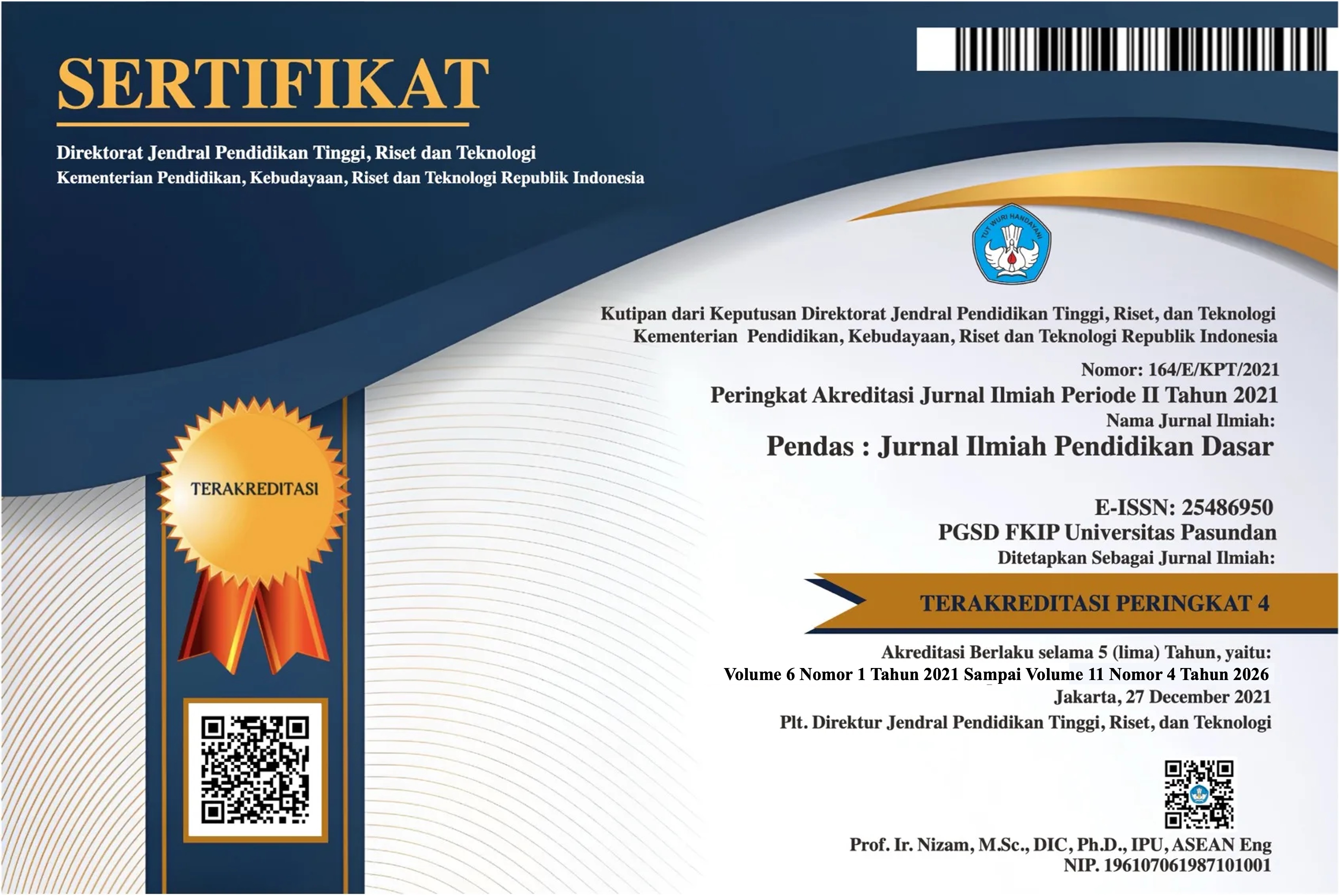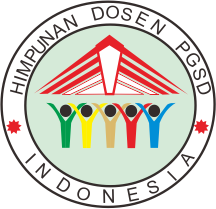GURU PENGGERAK: PELUANG, TANTANGAN, DAN ARAH PENGEMBANGAN DI INDONESIA
DOI:
https://doi.org/10.23969/jp.v9i04.21326Keywords:
Teacher Leaders, Education, Teacher Development, Educational Transformation, Educational Challenges ABSTRAbstract
The Guru Penggerak Program aims to enhance the quality of education in Indonesia by developing the role of teachers as learning leaders. This article addresses the issue of the limited leadership role of teachers within educational communities, which hinders educational transformation at the local level. The study aims to analyze the opportunities, challenges, and developmental directions of the Guru Penggerak Program based on the author's experiences in various roles within the program, ranging from practice instructors to facilitators in intensive areas such as Papua. The methodology used is a reflective-descriptive approach based on empirical experiences. The analysis focuses on the dynamics of program implementation, encompassing aspects of training, field application, and the response of educational communities. The findings reveal that the program offers opportunities to enhance pedagogical competence, leadership skills, and school cultural transformation. However, the program faces challenges such as participants' capacity gaps, resistance to change, and geographical and infrastructural constraints, especially in remote areas. This article provides recommendations, including strengthening local support, increasing technological capacity, conducting continuous evaluations, and reinforcing alumni networks for program sustainability. It contributes to offering comprehensive insights to support the development of more effective educational policies and practices in Indonesia.
Downloads
References
[1] I. T. Nisa, C. Sutarsih, and A. Sudarsyah, “Efektivitas Pelaksanaan Diklat Calon Guru Penggerak Angkatan 4 Berdasarkan Model Evaluasi Kirkpatrick di Balai Besar Guru Penggerak (BBGP),” J. Tata Kelola Pendidik., vol. 5, no. 2, pp. 111–126, 2023, doi: 10.17509/jtkp.v5i2.64848.
[2] R. Soewito, “Peran Guru Dalam Dunia Pendidikan,” J. Penggerak, vol. 4, no. 1, pp. 182–197, 2023, doi: 10.62042/jtp.v4i1.38.
[3] S. Brown, “Where are the part-time women teachers in senior school leadership: Inequalities, tensions and timescapes?,” Educ. Manag. Adm. Leadersh., no. 2018, pp. 1–15, 2023, doi: 10.1177/17411432231219679.
[4] I. Berkovich and B. Gueta, “Teachers’ authentic leadership and psychological need satisfaction climate in second chance programmes: The moderating role of teachers’ gender,” Educ. Manag. Adm. Leadersh., vol. 50, no. 6, pp. 995–1012, 2022, doi: 10.1177/1741143220957340.
[5] S. Ranta, H. Heiskanen, and S. Kahila, “Team leadership profiles in Finnish early childhood education centres – Teachers’ experiences of team leadership,” Educ. Manag. Adm. Leadersh., pp. 1–20, 2023, doi: 10.1177/17411432231168234.
[6] J. Wei, “Reflective learning: a new leadership development framework driving engineering innovation,” Reflective Pract., vol. 25, no. 3, pp. 352–377, 2024, doi: 10.1080/14623943.2024.2320141.
[7] M. Ezzani, “A Principal’s Approach to Leadership for Social Justice: Advancing Reflective and Anti-Oppressive Practices,” J. Sch. Leadersh., vol. 31, no. 3, pp. 227–247, 2021, doi: 10.1177/1052684620908347.
[8] S. D. Simanjunatk and I. Sitepu, “Peningkatan Pemahaman Calon Guru Penggerak Pada Modul Paradigma Dan Visi Guru Penggerak,” Pros. Konf. Nas. Pengabdi. Kpd. Masy. dan Corp. Soc. Responsib., vol. 6, pp. 1–7, 2023, doi: 10.37695/pkmcsr.v6i0.2096.
[9] Y. Yokoyama, B. Nadeak, and H. Sihotang, “Implementasi Kompetensi Guru Penggerak Dalam Menerapkan Merdeka Belajar Smk Di Tana Toraja,” J. Din. Pendidik., vol. 16, no. 2, pp. 187–200, 2023, doi: 10.51212/jdp.v16i2.176.
[10] A. Faiz, A. Pratama, and I. Kurniawaty, “Pembelajaran Berdiferensiasi dalam Program Guru Penggerak pada Modul 2.1,” J. Basicedu, vol. 6, no. 2, pp. 2846–2853, 2022, doi: 10.31004/basicedu.v6i2.2504.
[11] B. H. Gripsrud, K. Mellon, and E. Ramvi, “Depth-hermeneutics: a psychosocial approach to facilitate teachers’ reflective practice?,” Reflective Pract., vol. 19, no. 5, pp. 638–652, 2018, doi: 10.1080/14623943.2018.1538955.
[12] A. T. Williams, “Growing student teachers’ reflective practice: explorations of an approach to video-stimulated reflection,” Reflective Pract., vol. 21, no. 5, pp. 699–711, 2020, doi: 10.1080/14623943.2020.1798917.
[13] A. M. Suhandi and F. Robi’ah, “Guru dan Tantangan Kurikulum Baru: Analisis Peran Guru dalam Kebijakan Kurikulum Baru,” J. Basicedu, vol. 6, no. 4, pp. 5936–5945, 2022, doi: 10.31004/basicedu.v6i4.3172.
[14] A. Faiz and F. Faridah, “Program Guru Penggerak Sebagai Sumber Belajar,” Konstr. J. Pendidik. dan Pembelajaran, vol. 14, no. 1, pp. 82–88, 2022, doi: 10.35457/konstruk.v14i1.1876.
[15] Abd. Qadir Muslim and Tamim Mulloh, “Analisis Kebijakan Program Guru Penggerak Sebagai Upaya Regenerasi Supervisor Pendidikan Yang Berkualitas Di Indonesia,” J. Publicuho, vol. 5, no. 3, pp. 790–801, 2022, doi: 10.35817/publicuho.v5i3.28.
[16] Surahman, Rahmani Redha, Radiana Usman, and Saputra Imen Ardianus, “The Role of Driving Teachers in Independent Learning Education in Kubu Raya,” J. Pendidik. Indones., vol. 3, no. 04, pp. 2746–1920, 2022, [Online]. Available: https://japendi.publikasiindonesia.id/index.php/japendi/article/view/667
[17] N. Nurhayati, L. Hartati, and H. Suharyati, “Efektifitas Program Guru Penggerak dalam Meningkatkan Kualitas Pendidikan Sekolah Dasar di Indonesia (Analisis Data Driven),” JIIP - J. Ilm. Ilmu Pendidik., vol. 7, no. 9, pp. 10473–10479, 2024, doi: 10.54371/jiip.v7i9.5574.
[18] A. A. SHELEMO, “No Titleیلیب,” Nucl. Phys., vol. 13, no. 1, pp. 104–116, 2023.
[19] N. Mead, “Insight and empathy: comparing the responses of pre-service teachers when reflecting on objective versus descriptive scenario-based learning,” Reflective Pract., vol. 24, no. 2, pp. 197–209, 2023, doi: 10.1080/14623943.2022.2155126.
[20] K. M. A. Salviejo, E. D. Ibañez, and J. T. Pentang, “Critical thinking disposition and learning approach as predictors of mathematics performance,” J. Educ. Learn., vol. 18, no. 4, pp. 1107–1116, 2024, doi: 10.11591/edulearn.v18i4.21386.
[21] D. Damayanti and M. Asbari, “Guru Penggerak: Pengembangan Pendidikan melalui Kepemimpinan Guru,” J. Inf. Syst. Manag., vol. 3, no. 2, pp. 5–10, 2024.
[22] O. P. Sijabat, M. M. Manao, A. R. Situmorang, A. Hutauruk, and S. Panjaitan, “Mengatur Kualitas Guru Melalui Program Guru Penggerak,” J. Educ. Learn. Innov., vol. 2, no. 1, pp. 130–144, 2022, doi: 10.46229/elia.v2i1.404.
[23] R. H. A. Gani, N. Supratmi, T. Ernawati, and H. Wijaya, “Pembinaan Guru Inspiratif: Pelatihan Supervisi Akademik Berorientasi Coaching dalam Program Pendidikan Guru Penggerak di Lombok Timur,” J. Pengabdi. Masy. Sultan Indones., vol. 1, no. 1, pp. 45–56, 2024, doi: 10.58291/abdisultan.v1i1.207.
[24] A. Harris and M. Jones, “Teachers leading enquiry,” Sch. Leadersh. Manag., vol. 42, no. 4, pp. 309–312, 2022, doi: 10.1080/13632434.2022.2117522.
[25] H. W. Hemy and R. Kusuma Yudha, “Kontribusi Program Guru Penggerak Dalam Meningkatkan Kualitas Pembelajaran Di Smpn 21 Kota Bengkulu,” J. Pancasila dan Kewarganegaraan, vol. 3, no. 2, pp. 369–374, 2023, doi: 10.36085/jupank.v3i2.5187.
[26] T. Prasetyo, S. Putria Gadies, R. F. Wudda, and V. S. Talaar, “Menelusuri Peran Dan Tantangan Program Guru Penggerak Di Sekolah Dasar,” J. Penjaminan Mutu, vol. 10, no. 01, pp. 23–31, 2024, doi: 10.25078/jpm.v10i01.3544.
[27] D. K. Sari, S. D. N. Palembang, and S. Selatan, “Analisis Kinerja Guru Penggerak di SD Negeri 149 Palembang,” vol. 5, no. 1, pp. 90–100, 2024.
[28] R. Saputra and M. R. Susanto, “Tantangan Guru Penggerak Dalam Mengerjakan Pembelajaran Muatan Seni Budaya Dan Prakarya Sekolah Dasar Di Gunungkidul,” Cilpa J. Ilm. Pendidik. Seni Rupa, vol. 8, no. 2, pp. 11–20, 2023, doi: 10.30738/cilpa.v8i2.14889.
Downloads
Published
Issue
Section
License
Copyright (c) 2025 Pendas : Jurnal Ilmiah Pendidikan Dasar

This work is licensed under a Creative Commons Attribution 4.0 International License.



















